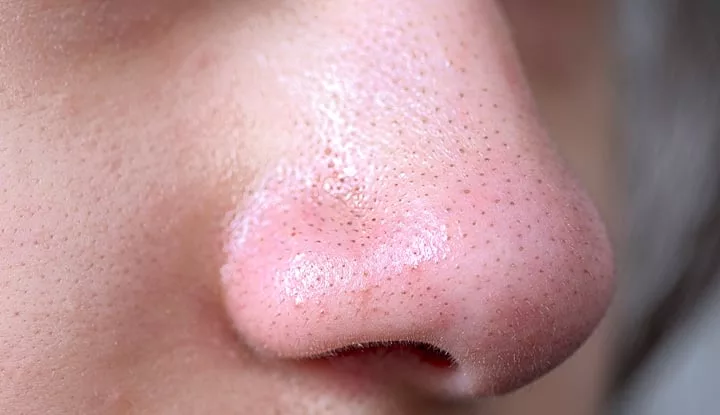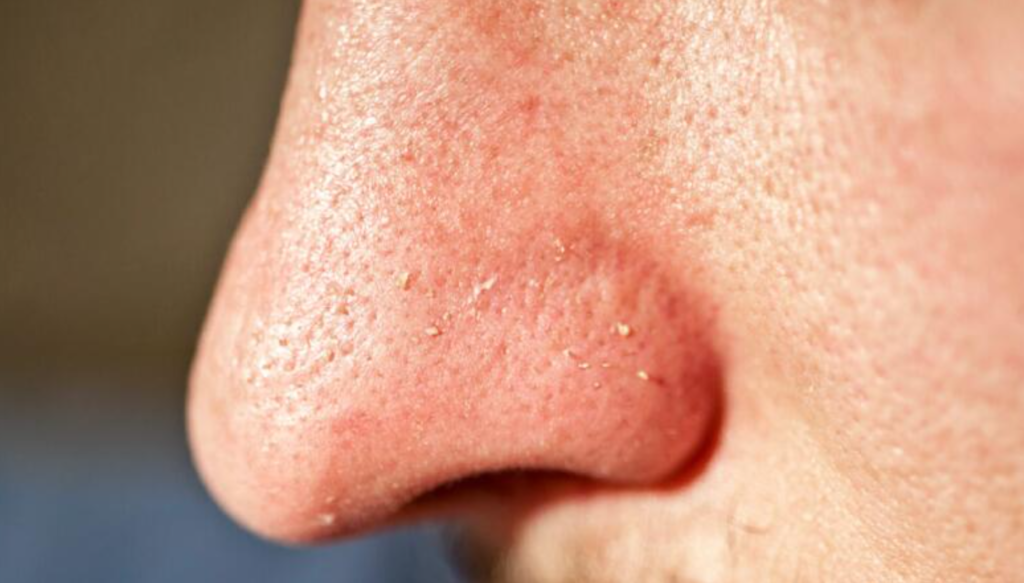Introduction to Sebum and Seborrhea
Normal skin has a soft, supple texture because of its water content. For skin to feel soft, pliable and “normal,” its top layer must contain a minimum of 10% water — and ideally between 20% and 35%. To help protect the outer layer of skin from losing water, the skin’s sebaceous glands produce an oily substance called sebum. Sebum is a complex mixture of fatty acids, sugars, waxes and other natural chemicals that form a protective barrier against water evaporation(Table 1). If the skin doesn’t have enough sebum, it loses water and feels dry. If environmental factors cause more water evaporation and overwhelm the ability of sebum to prevent water loss, the skin will shrivel and crack.

Decreased production of sebum — This is often a factor in the elderly, since the number and activity of sebaceous glands in the skin tends to decrease with age. Dry skin, also called xerosis, is a very common problem in modern societies, affecting people of all ages, even infants. As an article from Harvard Medical School explains.
The Science Behind Sebum Accumulation
Excessive sebum production can be attributed to various factors, including hormonal imbalances and genetics. Its accumulation on skin and hair leads to issues like acne and greasy hair 3.
Real-Life Experiences
Case Study 1: John’s Battle with Seborrhea
John, a 30-year-old, experienced severe scalp and skin issues due to excess sebum. His journey to recovery involved a combination of medical treatments and lifestyle changes.
Case Study 2: Dietary Influence on Seborrhea
Sarah, another individual affected by seborrhea, noticed significant improvements by altering her diet. Foods high in zinc and omega-3 fatty acids helped in regulating her sebum production.
Dietary Insights
Research shows a strong link between diet and sebum production. For instance, a diet rich in processed foods can exacerbate seborrhea.
Medical Perspectives
Dermatologists like Dr. Emily Roberts emphasize the importance of understanding individual skin types for effective seborrhea management. Doctors often recommend topical treatments and specialized shampoos.
International Organizations’ Stance
Organizations like the World Health Organization (WHO) have published guidelines on managing skin conditions like seborrhea. They advise a balanced diet and proper skincare routines.
Treatment and Management
Besides medical treatments, home remedies such as aloe vera and tea tree oil can be beneficial. Regular cleansing and moisturizing are also crucial.
Preventive Measures
Adopting a healthy lifestyle and maintaining a skincare routine are key to preventing seborrhea.
Understanding Seborrhea’s Impact on Daily Life
The presence of seborrhea can greatly affect an individual’s confidence and social interactions. It’s not just a physical issue; the psychological impact is also significant. People with seborrhea often experience embarrassment and frustration due to the persistent nature of the condition.
Advances in Seborrhea Treatment
Recent advancements in dermatology have led to more effective treatments for seborrhea. Innovative therapies, including light therapy and advanced medicated formulations, are providing new hope for those struggling with this condition.
Expert Analysis: The Role of Hormones
Hormonal fluctuations, especially during puberty, pregnancy, and menopause, can significantly influence sebum production. Experts in endocrinology and dermatology often collaborate to provide comprehensive treatment plans for affected individuals.
Cultural Perspectives on Seborrhea
Different cultures have unique approaches to managing seborrhea. For example, in some Asian cultures, herbal treatments and acupuncture are commonly used, while in Western cultures, the focus is more on pharmaceutical treatments.
Youth and Seborrhea: A Special Focus
Adolescents are particularly prone to seborrhea due to hormonal changes during puberty. Schools and pediatricians play a crucial role in educating young people about managing this condition.
The Environmental Factor
Environmental factors like pollution and climate can exacerbate seborrhea. Experts advise taking extra skincare precautions in polluted or extreme weather conditions.
Seborrhea in the Workplace
Seborrhea can also impact professional life, affecting self-image and interactions with colleagues. Understanding and supportive workplace environments are essential for those dealing with this condition.
Innovation in Skincare Products
The skincare industry is continually evolving, with products specifically designed to combat seborrhea becoming more prevalent. These products aim to regulate sebum production while maintaining skin health.
Conclusion
Understanding sebum and its effects on our skin and hair is vital for managing seborrhea. With the right knowledge and care, it is possible to alleviate its symptoms and lead a comfortable life.
Seborrhea, while challenging, is a manageable condition. With the right combination of medical treatment, lifestyle adjustments, and support, individuals can effectively control seborrhea and improve their quality of life.
FAQs
- What triggers excessive sebum production? Hormonal changes, diet, and stress are common triggers.
- Can diet really influence sebum production? Yes, certain foods can exacerbate or alleviate seborrhea symptoms.
- What are some home remedies for seborrhea? Aloe vera, tea tree oil, and regular washing are effective.
- Do dermatologists recommend specific treatments? Yes, treatments vary based on individual skin types.
- Can lifestyle changes prevent seborrhea? Absolutely. A healthy lifestyle significantly impacts skin health.
- Are there specific skincare products recommended for seborrhea? Yes, products with salicylic acid, sulfur, and zinc are often recommended.
- How does the environment affect seborrhea? Pollution and extreme weather can worsen seborrhea symptoms.
- Can seborrhea be cured permanently? While there’s no permanent cure, it can be effectively managed with treatment.
- Is seborrhea more common in any specific age group? It is most common in adolescents and young adults due to hormonal changes.
- What role do hormones play in seborrhea? Hormonal imbalances, particularly androgens, significantly influence sebum production.

